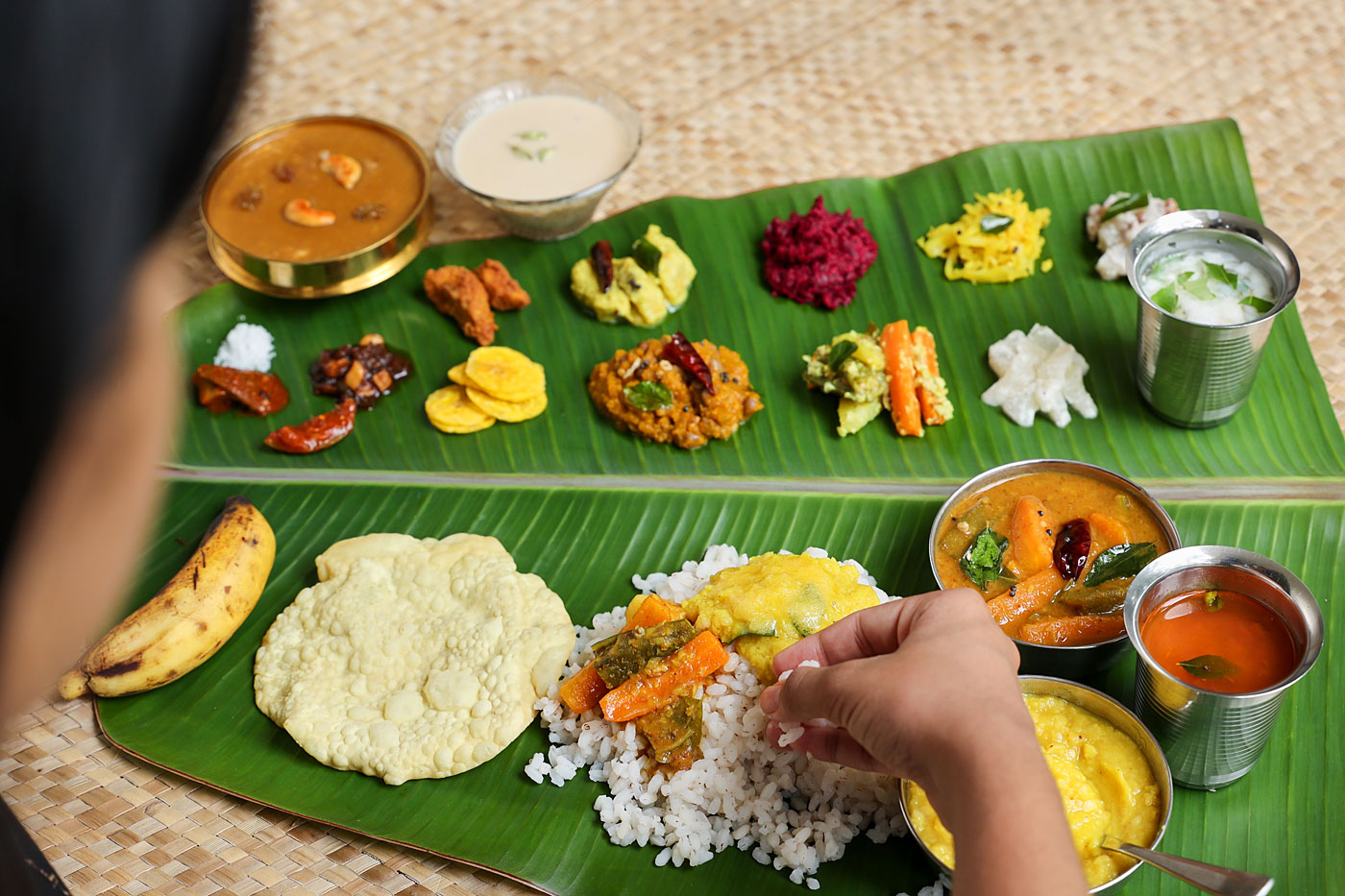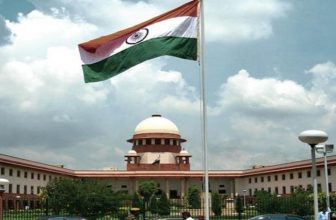
Must Try Kerala Main Course Dishes
The main course dishes of Kerala combine the various facets of Kerala culture – Malabar, Hindu, Syrian Christian, and coastal.
5. Malabar Biryani (Meat or Fish)
Every state of India has its variety of biryani, and Kerala takes pride in its very own Malabar biryani! Made with short-grain Kaima rice that is lighter and more fragrant than the basmati rice used in other biryani varieties, Malabar biryani is loved for its lower spice level. That means any foreign tourist can enjoy a Malabar biryani without breaking into a sweat.
This aromatic dish packs a punch of flavours with a blend of spices, ghee, cashews, raisins, and a generous amount of fried onion. Malabar biryani is also known as Thalassery biryani as it developed in the northern region of Thalassery in Kerala. Malabar biryani is typically accompanied by a sweet pickle of dates, a coconut-mint chutney, pappad, and raitha (yoghurt). You can get Malabar biryani in protein variations of chicken, mutton, beef, and even fish.
Below: Malabar BIryani, Plan Ashley Go

6. Porotta and Beef Curry (Meat)
Porotta and beef curry is a must-try, beloved combination of Kerala. The porotta is a type of flaky, layered flatbread made from maida (refined flour). The cooking requires skilful kneading and flipping, like that of a pizza, to achieve its characteristic texture. The beef curry is made with a blend of spices, onions, and tomatoes, and cooked in coconut oil.
Porotta originated in northern Kerala during World War II, when the British colonialists exported the entire rice cultivation from India and left the natives looking for alternatives to fill their stomachs. Porotta soon spread to every region of Kerala and even to the neighbouring states. Today porotta is Kerala’s most loved street food and an all-day dish.
Below: Porotta with beef curry, Plan Ashley Go

7. Karimeen Pollichathu (Fish)
Karimeen Pollichathu is a classic Kerala dish featuring the pearl spot fish (karimeen), which is native to the backwaters of Kerala. The fish is marinated with spices, wrapped in banana leaves, and then grilled or pan-fried, resulting in a smoky, flavourful dish. The banana leaf not only imparts a unique flavour to the fish but also keeps it moist and tender.
The karimeen pollichathu is an integral part of Kerala’s backwater experience, especially in Alappuzha, where it is served on the houseboat along with Kerala’s very own palm wine, toddy. You can savour this dish while you gently sway on the houseboat exploring Alappuzha’s natural beauty.
Due to its popularity and the role it plays in Kerala’s tourism initiatives, karimeen was declared the state fish of Kerala in 2010. Karimeen pollichathu is generally spicy, but the cooks on houseboats are very used to adjusting the spice level according to the palate of their guests. The best part is that, while on a houseboat, you get to catch the fish using fishing rods and the cook prepares this fresh catch right on the boat.
8. Kappa and Fish Curry (Fish)
If you believe you have a great spice tolerance level, I dare you to try kappa and fish curry in Kerala! Kappa is tapioca or cassava, that is boiled and mashed and then mixed with a spiced coconut paste. The fish curry is made with red chilli powder, tangerine, and a variety of spices.
Kappa reached the shores of Kerala from Portugal in the 16th century. This was another rice alternative that the Keralites adopted to fight hunger in World War II. From that time to the 1970s, kappa was the food of the labour class as it is a starchy root vegetable, high in calories. Over time, it became a staple in Kerala households, especially the Christians of central Kerala.#
9. Sadya (Vegetarian)
A visit to Kerala is incomplete without trying sadya, the traditional feast of Kerala. A sadya is an elaborate vegetarian meal with 24-30 varieties of dishes served on a banana leaf to be had with a special rice of Kerala called “matta.” The Matta rice has nutritional benefits similar to brown rice, making it a healthier choice than your regular white rice. Some of the essential dishes in a sadya are parippu, sambar, rasam, avial, thoran, olan, pickles and payasam.
A typical Malayali eats a sadya on special occasions like Kerala’s regional festivals of Onam (August-September) and Vishu (April). We always sit on the floor with our legs crossed to eat sadya on these festivals as per our traditions.
Apart from festivals, sadya is also served at Hindu weddings across Kerala. Several vegetarian restaurants across Kerala serve Kerala sadya with over fifteen dishes, but if you can get yourself invited to a Hindu wedding, that will give you the best experience of a full-fledged sadya.
Below: a banana leaf of traditional Sadya, Shutterstock







